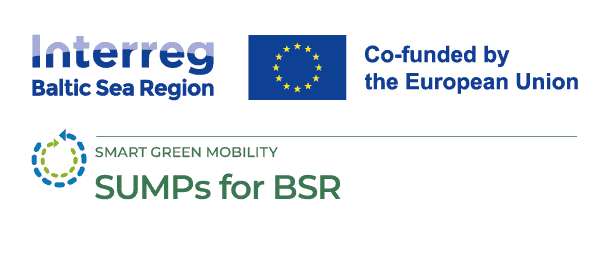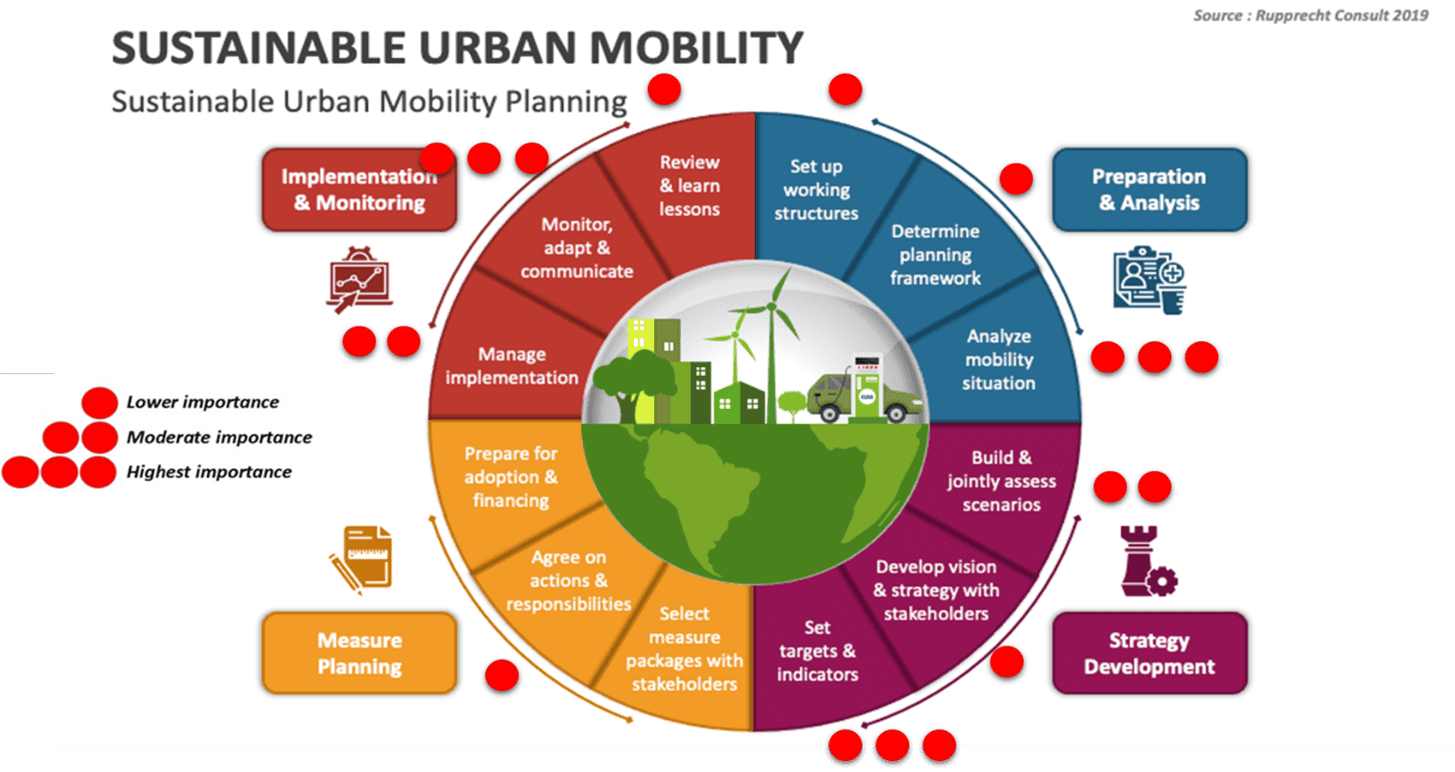
Tracking Progress Toward more Sustainable Urban Mobility Planning
08 January 2025
A pathway to creating a people-centred inclusive mobility system, sustainable urban mobility planning (SUMP) is a complex and long-term process that includes not only careful planning and execution of actions but also systematic monitoring and analysis of their effectiveness. It is crucial to assess the extent to which the planned outcomes are achieved and make necessary adjustments during implementation. This approach ensures the SUMP process’s efficiency and that the urban mobility system is better adapted and aligned to evolving conditions and the needs of residents.
For these reasons, monitoring and evaluation (M&E) are key elements of sustainable urban mobility management. An efficient monitoring system enables an accurate diagnosis of the current situation, identifies changes occurring in the environment, and develops realistic goals and actions. Moreover, it allows for analysing both good and bad practices, facilitates drawing lessons for the future, and avoids repeating mistakes.
The M&E framework is essential at all stages of the SUMP process
An effective M&E framework is crucial at every stage of the SUMP process – from Preparation & Analysis to Implementation & Monitoring, enabling adaptive management through continuous monitoring and evaluation. It provides the data and information that form the foundation for planned actions and goals at all levels, from tactical to strategic, and the knowledge necessary to determine whether these actions deliver the expected results. This means that the M&E framework supports management processes, increasing the efficiency of actions and contributing to the faster achievement of sustainable development goals.
The M&E framework developed within the SUMPs for BSR project facilitates the creation of a set of clear and realistic goals across various time horizons (ranging from short-term, one-year goals to long-term, e.g., 10-year goals). The articulation of these goals should be precise and linked to the formulation of indicators, allowing for the continuous assessment of the extent and direction of changes in each area. Therefore, the M&E framework serves both to define the current state of a given urban mobility system and to monitor the changes occurring within it in the future.
In summary, the set of indicators used in the monitoring and evaluation system, along with the data collected, should enable both the monitoring of the urban mobility system itself and the assessment of the effectiveness and efficiency of the actions taken.
Data availability and quality
Data availability and quality should be continuously ensured to implement the effective monitoring and evaluation framework. Data used in mobility management should be of the highest possible quality.
One fundamental idea differentiating sustainable urban mobility plans (SUMPs) from traditional transport documents is the extensive stakeholder engagement in the document development process. Many stakeholders can also be seen as valuable data collection sources.
Indicators
M&E is often viewed through monitoring indicators, but the scope of activities in this area is much broader. It does not only refer to the Sustainable Mobility Plan itself but also to the whole planning process. This means it is necessary to monitor and evaluate the process of creating and/or updating the plan, focusing on stakeholder involvement which will enhance informed decision-making and improve acceptance of actions taken. This is an often underappreciated aspect of M&E in sustainable urban mobility planning.
Modal split – the Holy Grail among indicators
Modal split remains one of the most popular and significant metrics used. This is partly because many key objectives in sustainable urban mobility plans (SUMPs) are directly related to modal distribution. In their SUMPs, most cities aim to increase the share of active travel modes and public transport while reducing the share of private car use in meeting transportation needs.
Modal split is a helpful tool for assessing the degree to which specific sustainable travel goals have been achieved, i.e. as demonstrated by the strategic documents of the Swedish city of Gävle. For more than 18 years, the plan aimed to double the share of cycling trips, although the baseline in 2012 had already significantly exceeded 10%. The increase in the share of cycling trips corresponds to a substantial reduction in the importance of private car usage and CO₂ emission reductions.
Explore the Draft framework for Monitoring and evaluation for sustainable urban mobility, designed to make monitoring and evaluation effective and approachable. This framework will guide you in establishing a monitoring and evaluation framework to help you turn your ambitious goals into measurable successes.






